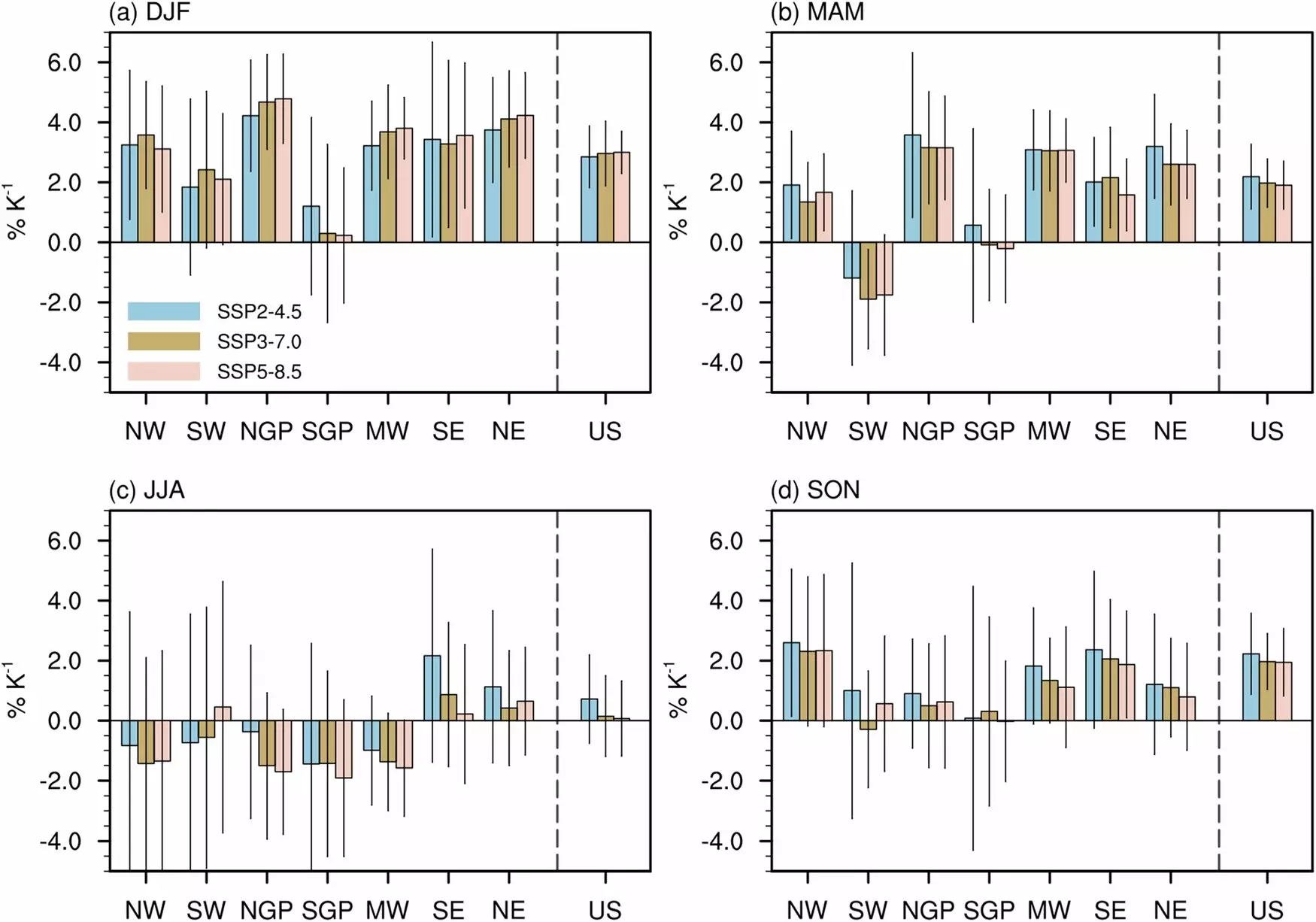As climate change becomes an increasingly urgent concern for global populations, research continues to shed light on its ramifications. A recent study conducted by Akintomide Akinsanola and his team at the University of Illinois Chicago sheds significant insight into how global warming is poised to alter winter weather patterns across the United States. Findings from their investigation, published in the journal npj Climate and Atmospheric Science, reveal that Americans can expect not only wetter winters but also an increase in intense weather-driven extremes as the end of the 21st century approaches.
The study harnesses 19 different Earth system models to project potential changes in winter precipitation, comparing forecasted figures for 2070 to 2099 with data from 1985 to 2014. Overall, the researchers found a mean increase in winter precipitation of 2% to 5% for each degree of warming. That translates into significant increases across many regions: particularly in the Northwest and Northeast. Such changes herald a troubling trend that suggests winter precipitation will become not only more abundant but also more extreme.
Akinsanola’s research indicates that winters characterized as “very wet,” or those in the top 5% of historical precipitation records, could occur as frequently as every four years in certain areas. This shift means that droughts and flood periods may become more common, bringing with them a range of challenges for agriculture, water resources, and disaster preparedness.
While the overarching trend points to increased winter precipitation, regional differences reveal a complex climate landscape. The Northeast and Midwest appear most susceptible to significant increases in wet winter conditions, while the southern Great Plains, which include states like Texas and Oklahoma, exhibit a perplexing phenomena where extreme dry events could counterbalance any increase in precipitation.
Akinsanola notes that this is critical for understanding climate change’s multifaceted impacts across the nation. While wetter winters may become the norm in many regions, the Southern Great Plains may face a mixed bag of conditions that complicate adaptive measures. Understanding these regional intricacies will be vital for local governments and communities to prepare for future climate scenarios.
In addition to the quantity of precipitation, the quality and form it takes are crucial considerations. Past research highlighted in Akinsanola’s study affirms a worrying transition trend from snow to rain due to increasing temperatures. This shift is critical; the reduction of snowpack not only threatens the availability of water resources but also impacts ecosystems that rely on winter snow for gradual water release in warmer months.
“Current and projected changes in the mix of precipitation may stress existing water resource systems,” Akinsanola warns. As the balance between rain and snow shifts, water availability could fluctuate unpredictably, complicating agricultural planning and water management policies.
Given the impending changes to winter weather, Akinsanola emphasizes an urgent need for infrastructure upgrades and improvements. The expected increases in extreme weather events necessitate the reevaluation of current drainage systems and structural designs to guard communities against the potential ramifications of flooding and storm damage.
As climate projections continue to evolve, local governments will need to act promptly to adapt their infrastructure to meet the demands of a wetter, more unpredictable winter climate. The innovative use of high-resolution climate models and collaboration with research institutions, such as Argonne National Laboratory, may facilitate a more nuanced understanding of expected changes and help inform better urban planning decisions.
As the United States faces a future marked by wetter winter conditions and increased weather extremes, proactive measures are essential. The research led by Akinsanola serves as a clear warning that climate change will significantly reshape the landscape of American winters. Understanding these changes will not only empower communities to build resilience but can also serve as a clarion call for collective environmental stewardship. Recognizing the impending shifts in winter weather patterns is the first step in ensuring the safety and prosperity of future generations.

